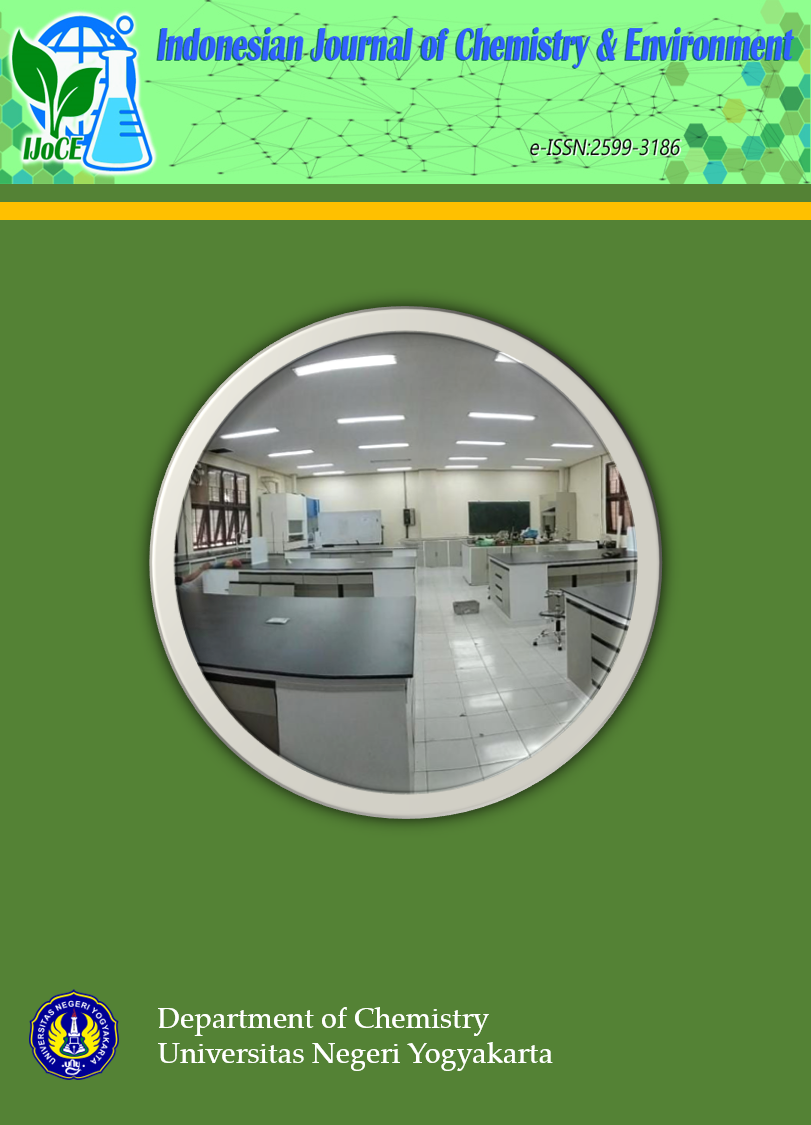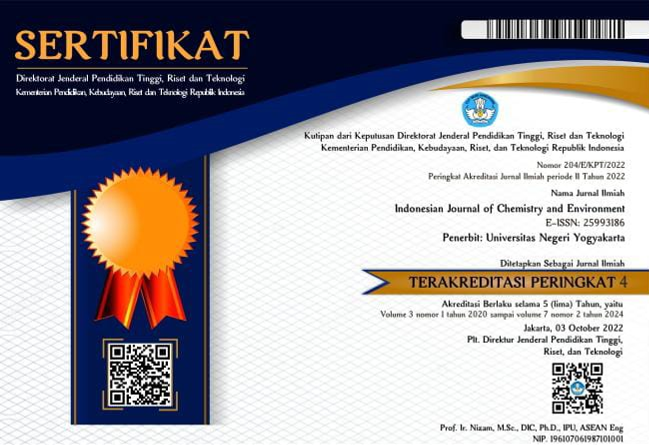Tin - The Occurrences, Properties, and Applications: A Literature Review
DOI:
https://doi.org/10.21831/ijoce.v7i2.77581Abstract
Tin is a chemical element with the symbol Sn, atomic number of 50, atomic mass of 118.71 g/mol and belong to group 14 and period 5 in the periodic table of elements. Tin has two main allotropes, α-tin and β-tin, 10 stable isotopes, 29 unstable isotopes and 30 metastable isomers, the greatest number of any element. In nature, tin occurs primarily as the mineral cassiterite (SnO2) in various geological formations. It is often found in association with granite rocks and alluvial deposits. Tin is purified by smelting cassiterite with carbon followed by boiling and liquation or electrolytic methods. Tin is a silvery-white metal with a relatively low melting point of 231.93°C and a boiling point of 2,602°C. It exhibits good corrosion resistance, making it suitable for use in various environments, especially when alloyed with other metals. In addition, tin is soft, malleable, ductile metal and has excellent solderability making it useful for joining other metals together in the electronic and electrical equipment. Tin has two mains oxidation states, +2 and the slightly more stable +4, and can form inorganic and organometallic compounds. Due to its remarkable physical and chemical properties make this metal attract attention and has very broad benefits. Tin is not only used in conventional technologies such as solders, cans and coins, but also in advanced technologies such as tin lithium-ion batteries, smart screens and solar cells. In future, tin will play a crucial role in advancing green technologies by enabling the development of renewable energy systems, energy-efficient processes, and environmentally friendly materials. Its versatility and sustainability make it an indispensable element in the transition towards a more sustainable future. Tin is also used as reagents in organic synthesis, such as allylic, allenic and propargylic stannanes, for forming C-C bond which are very necessary in drug synthesis and development. Tin as individual particles is not exceedingly lethal to living organisms. Elemental tin metal, its salts and its oxides present low toxicity. In contrast, certain organotin compounds are almost as toxic as cyanide. Since it is not biodegradable, organic tin can last longer in the environment.
Downloads
Published
2024-12-02
How to Cite
[1]
Muderawan, I.W. et al. 2024. Tin - The Occurrences, Properties, and Applications: A Literature Review. Indonesian Journal of Chemistry and Environment. 7, 2 (Dec. 2024), 57–83. DOI:https://doi.org/10.21831/ijoce.v7i2.77581.
Issue
Section
Articles
Citation Check
License
Authors who publish with this journal agree to the following terms:
- Authors retain copyright under a Creative Commons Attribution–ShareAlike License (CC BY SA) that allows others to share: copy, and redistribute the material in any medium or format, Adapt: remix, transform, and build upon the material, for any purpose, even commercially.
- Authors are able to enter into separate, additional contractual arrangements for the non-exclusive distribution of the journal's published version of the work (e.g., post it to an institutional repository or publish it in a book), with an acknowledgement of its initial publication in this journal.
- Authors are permitted and encouraged to post their work online (e.g., in institutional repositories or on their website) prior to and during the submission process, as it can lead to productive exchanges, as well as earlier and greater citation of published work.










